Introduction
In the realm of comforting, wholesome meals, few dishes rival the simplicity and depth of flavor found in a steaming bowl of white radish beef soup. This timeless recipe, rooted in Asian culinary traditions, marries tender beef and earthy radish in a fragrant broth infused with aromatic herbs and spices. Beyond its delicious taste, this soup is celebrated for its nutritional benefits—a harmonious blend of protein, fiber, and vitamins that warm the body and soothe the soul. Whether you’re seeking respite from chilly weather, recovering from illness, or simply craving a meal that feels like a hug, this white radish beef soup is a culinary masterpiece worth mastering. In this guide, we’ll explore the art of crafting this dish from scratch, breaking down each step to ensure a flawless result every time.
The Ingredients: A Symphony of Flavors and Textures
To embark on this culinary journey, gather the following ingredients. Each component plays a pivotal role in building the soup’s complexity, so precision in selection and measurement is key.
- Beef (750 grams): Opt for a tender cut like chuck roast, short ribs, or brisket. These cuts, rich in marbling, become meltingly tender after slow cooking, infusing the broth with a rich, beefy essence.
- White Radish (Daikon) (1 medium, approximately 500 grams): Often called daikon, this mild, slightly peppery root vegetable adds a refreshing crunch and subtle sweetness. Choose a firm radish with smooth, unblemished skin.
- Fresh Ginger (3-inch piece): Peel and slice into thin strips. Ginger imparts a warm, aromatic note while aiding digestion.
- Garlic (4 cloves): Minced finely to release its pungent, savory flavor.
- Green Onions (4 stalks): Separate the white and green parts; the whites will be sautéed, while the greens are reserved for garnish.
- Dried Shiitake Mushrooms (4–6 pieces, optional): Rehydrated in warm water, these add umami depth. Soaking liquid can be incorporated into the broth for extra flavor.
- Soy Sauce (2 tablespoons): Use a high-quality, low-sodium variety to control saltiness.
- Sesame Oil (1 tablespoon): A finishing touch that adds nutty richness.
- Salt and White Pepper (to taste): For seasoning.
- Water or Beef Broth (8–10 cups): Water works fine, but broth elevates the savory base.
- Cooking Oil (1 tablespoon): Neutral oil like vegetable or canola for sautéing.
Preparation: Laying the Foundation
Before igniting the stove, meticulous preparation ensures each ingredient contributes its best to the final dish.
-
Beef Preparation:
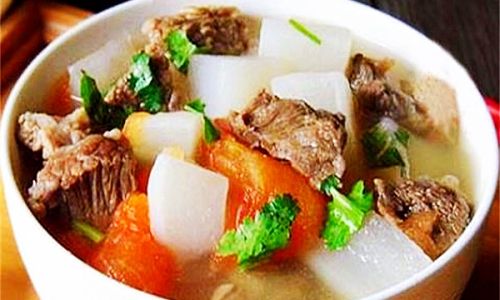
- Trim excess fat from the beef and cut it into 1.5-inch cubes. Smaller pieces cook faster but risk becoming tough; larger chunks retain moisture during simmering.
- Marinate the beef in a mixture of soy sauce, minced garlic, and 1 tablespoon of sesame oil for 20–30 minutes. This step tenderizes the meat and layers in flavor.
-
Radish Prep:
- Peel the daikon and slice it into 1-inch thick rounds. For visual appeal, halve or quarter the rounds into crescent shapes.
- Soak the radish pieces in cold water for 10 minutes to mellow any bitterness. Drain thoroughly before use.
-
Aromatics and Extras:
- Slice the white parts of the green onions into 1-inch segments; finely chop the green tops for garnish.
- If using dried shiitake mushrooms, rehydrate them in 1 cup of warm water for 20 minutes. Reserve the soaking liquid, straining it to remove sediment.
Cooking Process: Building Layers of Flavor
The magic of this soup lies in its layered cooking process, which transforms simple ingredients into a symphony of taste.
-
Sear the Beef:
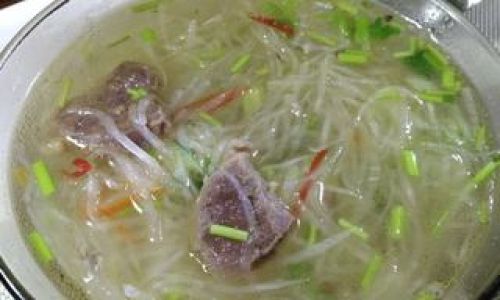
- Heat the cooking oil in a large, heavy-bottomed pot over medium-high heat. Once shimmering, add the marinated beef in batches to avoid overcrowding. Sear until browned on all sides—this caramelization develops a rich, Maillard-reaction flavor.
- Remove the beef and set aside. Deglaze the pot with a splash of water or broth, scraping up any browned bits (these are flavor gold!).
-
Sauté Aromatics:
- Lower the heat to medium and add the sliced ginger and white parts of the green onions. Sauté for 2–3 minutes until fragrant but not browned.
- Stir in the minced garlic and cook for an additional minute until aromatic.
-
Simmer the Broth:
- Return the seared beef to the pot, along with any accumulated juices. Pour in the water or broth, ensuring the meat is submerged. If using shiitake mushrooms, add them now along with their strained soaking liquid.
- Bring the mixture to a boil, then reduce the heat to a gentle simmer. Cover partially and cook for 1.5–2 hours. Skim off any foam or impurities that rise to the surface during the first 30 minutes—this ensures a clear, clean broth.
-
Add the Radish:
After the beef has simmered to tenderness, gently add the prepared radish. Continue simmering for 20–30 minutes, or until the radish is tender but not mushy. It should retain a slight firmness to provide texture contrast.
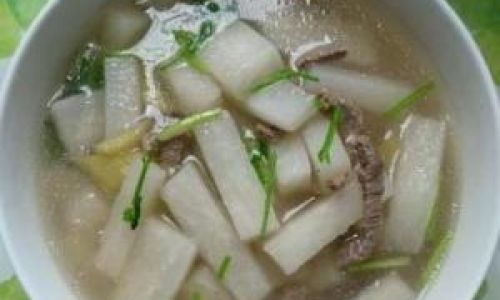
-
Season and Finish:
- Taste the broth and adjust seasoning with salt and white pepper. A pinch of sugar can balance the radish’s natural bitterness if needed.
- Drizzle with the remaining sesame oil and stir gently. The oil will emulsify into the broth, adding a luxurious sheen.
Serving Suggestions: Elevating the Experience
This soup shines brightest when paired with complementary elements that enhance its rustic charm.
- Garnishes: A sprinkle of chopped green onions, fresh cilantro, or a dash of chili oil adds vibrancy. For an Asian twist, top with fried shallots or a soft-boiled egg.
- Accompaniments: Serve alongside steamed jasmine rice, udon noodles, or crusty bread to soak up the broth. A side of kimchi or pickled vegetables provides a tangy counterpoint.
- Presentation: Ladle the soup into deep bowls, ensuring each serving includes beef, radish, and a generous portion of broth. The visual contrast between the pale radish and dark beef is inherently appealing.
Tips for Success: Avoiding Common Pitfalls
- Overcooking the Radish: Daikon becomes waterlogged and loses its sweetness if simmered too long. Test for doneness by piercing with a fork—it should yield slightly but not collapse.
- Skipping the Marination: While optional, marinating the beef amplifies its flavor. If short on time, at least coat the meat in soy sauce and garlic before searing.
- Using Lean Beef Cuts: Fatty cuts like chuck or brisket are essential for a rich broth. Lean meat will result in a thin, less flavorful soup.
- Rushing the Simmer: Low and slow cooking is non-negotiable. High heat will toughen the meat and cloud the broth.
Health Benefits: More Than Just Comfort Food
Beyond its comforting embrace, this soup is a nutritional powerhouse. Beef provides iron and B vitamins, while daikon offers fiber, vitamin C, and digestive enzymes. Ginger aids in reducing inflammation, and garlic boosts immunity. Together, they create a meal that nourishes both body and spirit.
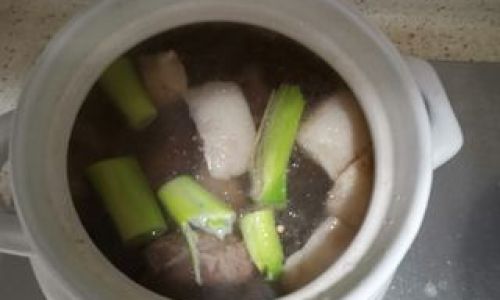
Conclusion: A Bowl Full of Tradition
White radish beef soup is more than a recipe—it’s a culinary legacy passed through generations, a testament to the beauty of simplicity. Whether enjoyed on a weeknight or served at a gathering, this soup invites conversation, connection, and contentment. With patience and care, you’ll master a dish that transcends mere sustenance, becoming a cherished memory in every spoonful. So, gather your ingredients, light the stove, and let the aromas of beef, radish, and ginger fill your kitchen. The reward? A bowl of warmth that speaks volumes.
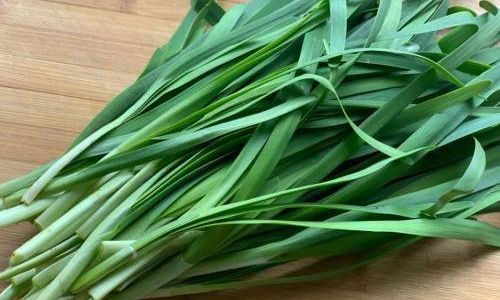
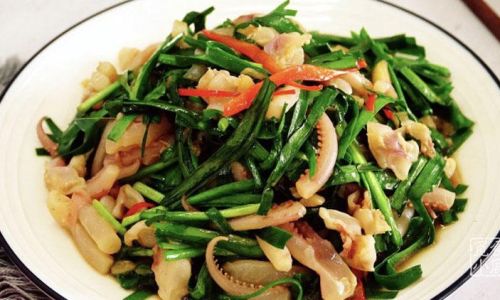
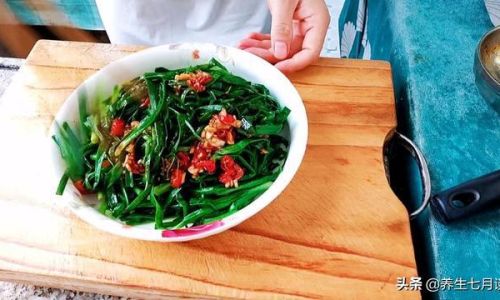


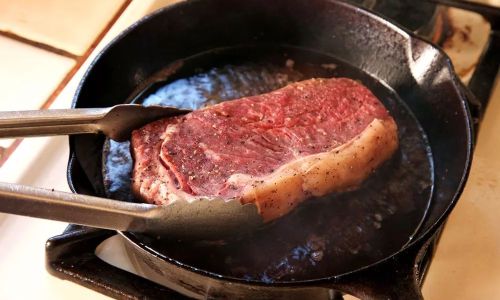
0 comments